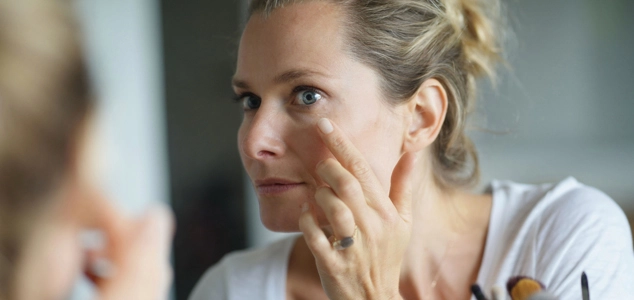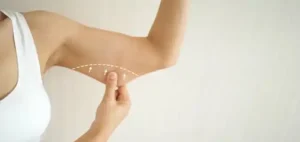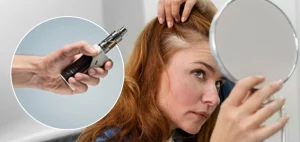Botox has become a household name in cosmetic enhancements, being renowned for its ability to smooth out wrinkles and revitalize appearances with minimal invasiveness.
However, the journey to achieving and maintaining those flawless results goes beyond just the procedure itself, venturing into the crucial phase of Botox aftercare.
In today’s blog, we will explain the Botox aftercare in detail, including all the dos and don’ts that need to be taken care of.
What is Botox?
Botox stands out as a minimally invasive cosmetic treatment, celebrated for its effectiveness in diminishing fine lines and wrinkles. It works by temporarily relaxing the muscles that are causing the wrinkles, leading to smooth skin that is free of fine lines; thus promoting a refreshed appearance.
Although the treatment process is swift and generally involves minimal to no discomfort at all, the importance of Botox aftercare cannot be overstated when it comes to guaranteeing the desired outcome.
Understanding Botox
Botox is a special medicine made from a toxin that can relax muscles. It is used by doctors to help smooth out wrinkles on the skin and treat certain muscle and sweat related problems.
When small amounts are injected into specific muscles, it can stop them from contracting, which helps reduce wrinkles or ease muscle conditions. Since the effects of the injection last for a few months, the treatment needs to be repeated at regular intervals to maintain the results.
Moreover, it is essential to have a certified aesthetician administer these Botox injections, ensuring safety and effective results.
How Long Does Botox Actually Last?
The effects of Botox typically last anywhere between 3 to 6 months – However, the duration can vary depending on the individual’s metabolism, the area being treated, and the amount of Botox being used.
Over time, the treated muscles gradually regain their activity, leading to the return of wrinkles or the original muscle condition, making the repeated treatments at regular intervals necessary to maintain the results.
Botox Aftercare
Botox typically lasts 3 to 6 months, but to ensure smooth application and extend its duration, certain steps can be taken before and after the treatment.
The Dos and Don’ts of Botox Aftercare
Dos:
- Follow Aftercare Instructions: Your healthcare provider will give you specific Botox aftercare instructions that need to be followed closely, ensuring the best results.
- Stay Upright: Try to remain upright for at least 4 hours after the treatment. This helps prevent the Botox from spreading to other areas.
- Gentle Facial Movements: Gentle facial exercises like smiling, frowning, and raising your eyebrows can help Botox work into your muscles, although this instruction can vary for each provider.
- Stay Cool: Avoid excessive heat exposure (like hot tubs, saunas, or strenuous workouts) for 24 hours to prevent swelling or bruising.
- Use Cold Compresses: If you experience swelling or bruising, apply a cold compress to the affected area.
Don’ts:
- Avoid Touching or Massaging the Area: Touching or massaging the treated area can cause the Botox to spread to unintended muscles.
- Steer Clear of Blood Thinners: To reduce the risk of bruising, avoid alcohol, aspirin, and other blood-thinning medications for a few days before and after your treatment, unless medically necessary.
- Skip Strenuous Exercise: Wait at least 24 hours before engaging in strenuous physical activities to prevent the Botox from migrating from the area of injection.
- Avoid Lying Down on Your Face: For the first 4 hours after the procedure, avoid lying down or leaning forward to prevent the Botox from moving.
- Stay Away from Facials or Other Treatments: Wait at least 24 hours before undergoing any facial treatments or using strong skincare products that could irritate the skin.
- Avoid Wearing Makeup: After a facial Botox treatment, it’s best to avoid applying makeup for the next 24 hours. Applying makeup involves rubbing the skin, which could inadvertently spread the toxin.
- Maintain an Upright Position: For the initial 4 hours following your Botox session, ensure that you remain seated in an upright position. Bending over or lying down could cause the toxin to migrate and increase the likelihood of bruising.
Conclusion
Botox is a non-surgical procedure renowned for its effectiveness in reducing wrinkles and smoothing skin, typically lasting a few months. However, adhering to certain precautions is recommended to achieve smoother and longer-lasting results.
To receive customized cosmetic treatments and Botox aftercare suggestions, Book your appointment today with Dr. Syra in NYC.

About The Author
Dr. Syra Hanif M.D.
Board Certified Primary Care Physician
Dr. Hanif is the Director of Aesthetic Medicine. She is a board-certified physician in Aesthetic Medicine who specializes in using non-surgical alternatives in order to enhance one's appearance through Botox and fillers.
Read More












